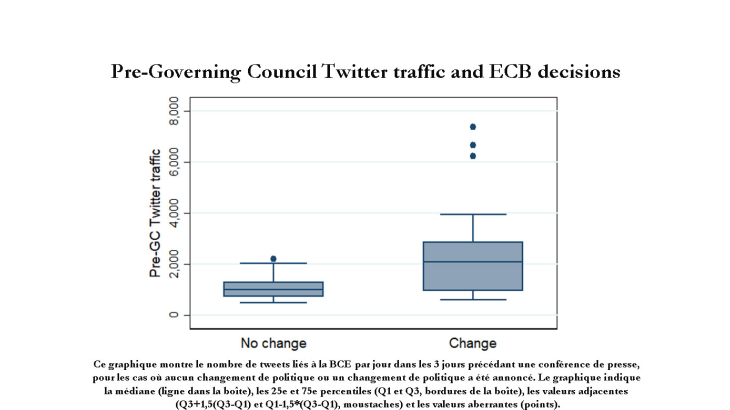Information provided by the central bank is continuously sought for by financial market participants, and leads them to update their assessment of the state of the economy, the economic outlook and the central bank reaction function. While there is an abundant literature on how financial markets react to central bank communication (which can be seen by everybody, and hence is typically labelled a “public” signal), this paper studies the question how private agents form expectations about upcoming monetary policy announcements through dispersed, individual information, i.e. through “private” signals. Such information acquisition proceeds continuously, whether or not there is a new communication from the central bank. To study this process, this paper builds on an institutional feature of central banks’ communication policies, namely “quiet” periods before policy announcements, during which policymakers abstain from communicating in public about the economic assessment or the outlook for monetary policy.
The ECB’s quiet period is in place for the 7 days preceding the announcement of the ECB’s monetary policy decisions. This policy provides us with a natural experiment to study how information acquisition and the formation of policy expectations proceed, beyond the processing of signals provided by the central bank. The paper develops several hypotheses about this updating process. In particular, we argue that market expectations of upcoming monetary policy decisions can improve if agents can share their views about the economy. This improvement will be stronger, the more views get shared, the more disperse the views are and the larger is the uncertainty about the economy.
To test these hypotheses, the paper analyses ECB-related Twitter traffic in the days before the ECB press conference and whether and how this has a bearing on the magnitude of the monetary policy surprise on the announcement day. Twitter has been shown to be a forum where news about the ECB gets disseminated, but also a platform for discussions about the ECB and its policies – not only, but to a large extent among monetary policy experts. Focusing on Twitter traffic during the ECB’s quiet period thus allows us to better understand information flows among agents in the absence of information supplied by the central bank.
Based on the sample of ECB policy announcements between January 2012 and April 2020, this paper first uncovers that Twitter traffic in the days before Governing Council meetings is higher if the subsequent monetary policy announcement is relatively surprising. Such a pattern can result if attention is triggered, for instance, by market expectations of change decisions (which, in turn, tend to generate larger surprises), or if agents observe a change in market prices. We therefore need to control for various factors that would trigger such increased attention.
When we test our hypotheses that increased information sharing is particularly beneficial if views about the economy are dispersed or if uncertainty is large, we find compelling evidence for the former: the ECB’s monetary policy surprises are larger when there is more disagreement about the economic outlook, but conditional on large disagreement, higher Twitter traffic during the quiet period is associated with lower monetary policy surprises.
The evidence documented in this paper is in line with the hypothesis that financial market participants and central bank watchers stand to benefit from sharing their views about economic fundamentals when disagreement is large (but not necessarily when uncertainty is large). By doing so, agents can form their expectations about future monetary policy based on a larger information set, and therefore come to more accurate expectations on average. Increased information exchange might therefore serve as a partial substitute for the processing of signals sent by the central bank, suggesting that pausing the information flow from central banks to markets does not pose any immediate concerns even if central bank communication is otherwise dominant.
